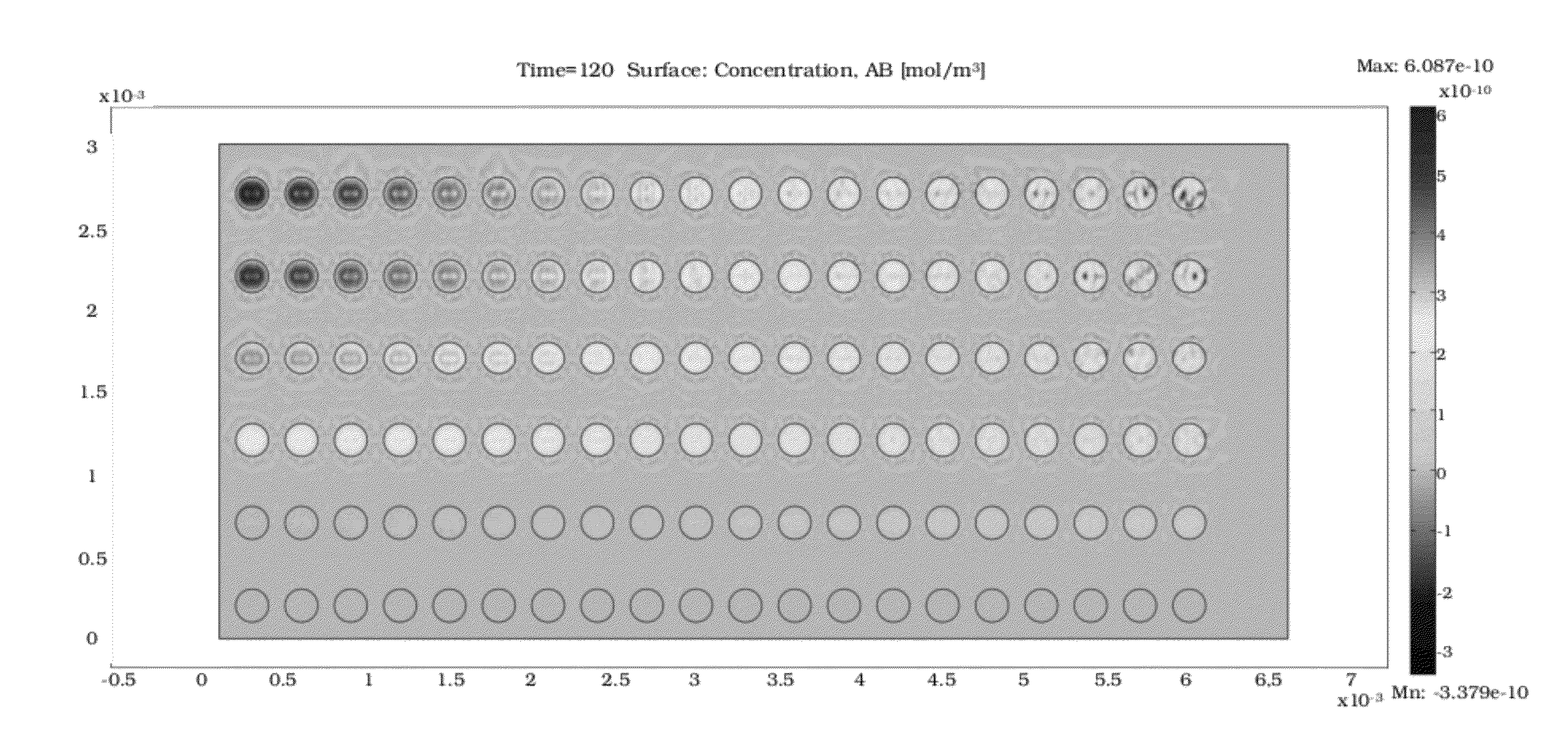Method for Estimating Kinetic Rates
a kinetic rate and rate technology, applied in chemical methods analysis, chemical property prediction, instruments, etc., can solve the problem of unsuitable replication of downstream spots
- Summary
- Abstract
- Description
- Claims
- Application Information
AI Technical Summary
Benefits of technology
Problems solved by technology
Method used
Image
Examples
examples
[0045]As surface material for the microarray printing, Millipore HF090MC100 nitrocellulose strips are used. The strips are pre-fabricated with a cardboard backing and are cut into smaller segments of 1 cm width and 3 cm in length (FIG. 1). The thickness of the membrane is approximately 135 μm. A consumer-grade glue (“Skollim”, Casco) is used to attach the strips to the glass slide support. For printing, a Nanoplotter 1.2 (Gesim) is used, and one drop of approximately 300 pL is deposited in each spot, producing arrays with proteins with high affinity, for example antibodies such as Affibody™ molecules, in rows with 40 downstream identical spots for each binder. After spotting the arrays, the slides are kept in room temperature during 24 hours before used for assays. Prior to performing the assay, a stretch of industrial grease (Spezialfett #3500, Heraeus) of approximately 2 mm width and 2 mm thickness is applied on one end of the strip to create a hydrophobic barrier, with room for a...
PUM
 Login to View More
Login to View More Abstract
Description
Claims
Application Information
 Login to View More
Login to View More - R&D
- Intellectual Property
- Life Sciences
- Materials
- Tech Scout
- Unparalleled Data Quality
- Higher Quality Content
- 60% Fewer Hallucinations
Browse by: Latest US Patents, China's latest patents, Technical Efficacy Thesaurus, Application Domain, Technology Topic, Popular Technical Reports.
© 2025 PatSnap. All rights reserved.Legal|Privacy policy|Modern Slavery Act Transparency Statement|Sitemap|About US| Contact US: help@patsnap.com



